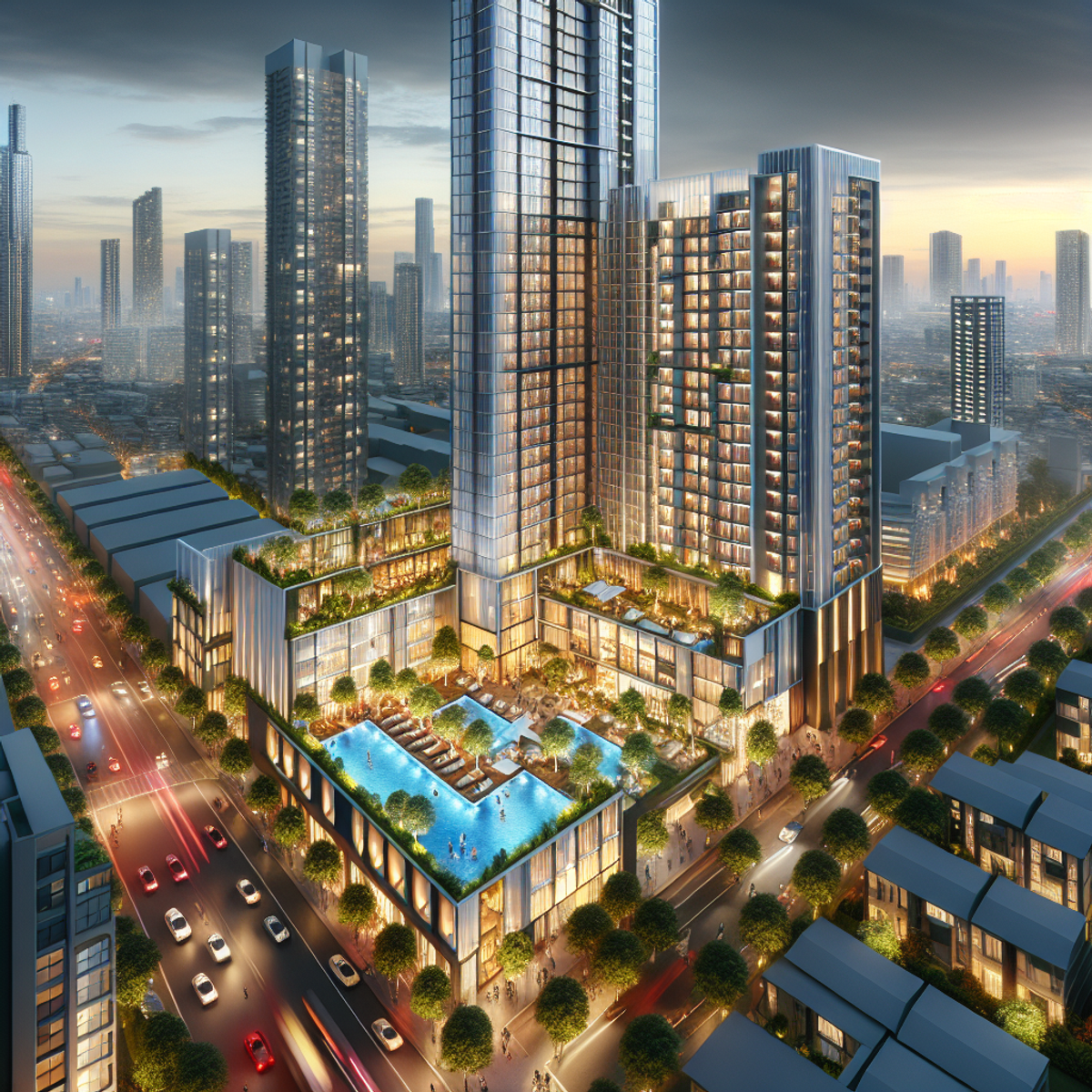The first home I bought with my husband was a high-end two-bedroom condo unit in a newly built boutique condo building in midtown Toronto. We were incredibly happy with our small but luxurious abode, but over the next few years, as the choice to have children loomed, we decided that a condo was not the place to raise children. When we purchased our first single family home, we found that we longed for the smaller space (yes you read that right!), higher end finishes and stellar location of our condo. We found that our condo was much easier to maintain given its smaller size and the no hassle grounds keeping. We also found that we could not afford to stock our new single family home with the same state of the art appliances and finishes that came with the pre-build price of our condo. Finally, we longed for the days that we could walk out the front door of our building and be in front of our favorite coffee shop/pub/clothing store in less than three minutes.
Looking back, we should have considered raising our children in this condo unit. At the time, it didn’t seem like the acceptable thing to do but today, the choice to raise children in a condo is incredibly on trend and a great option if you want to rear your offspring in the heart of the city you love! As more young couples are raising children in condo buildings in Toronto and the GTA, developers and city officials have taken note. Recently the City of Toronto created a proposed set of guidelines titled, Growing Up: Planning for Children in New Vertical Communities, designed to promote kid-friendly condos in the city.
The proposed guidelines were created by the City of Toronto’s planning and growth management committee with input from builders, families and community members. The guidelines seek to create condo communities that help young families and children thrive by focusing on everything from condo design that is more hospitable to family living to family friendly community planning to daycare accommodations and needs. On July 5th 2017, City Council will vote as to whether these guidelines should be put in place for a trial period of two years. If this occurs, new condo developments will have to keep in mind creating buildings that meet the family-friendly criteria of these guidelines.
If the proposed guidelines go through, we will see larger condo units (two-three bedroom) grouped on lower floors of condo buildings so that the comings and goings of parents and children are more easily accommodated. We will also see units designed for future space flexibility as families grow and family needs change. On the neighborhood front, we will notice new builds being encouraged to offer more park and child-friendly spaces and to consider proximity to schools. We will also notice more on-site daycare facilities in high-rise condominium buildings, as well as stroller storage in the lobbies.
Had these guidelines been in place when I owned my swanky two-bedroom condo unit in one of Toronto’s most beloved areas, I would have indeed stayed to raise my two lovely boys there. Yes, I was encouraged on every front to buy a single family home when it came time to procreate, but I do believe that if there had been more young families in my building or my building had been created with the Growing Up: Planning for Children in New Vertical Communities guidelines in mind, I would still be living in my favorite home purchase of all time.
Neighbourhood guidelines
In addition to looking for opportunities to integrate child care facilities into new developments where needed, the neighbourhood guidelines encourage grouping together child care facilities, parks and schools at the same site.
“The TDSB [Toronto District School Board] will use these guidelines as a stepping stone in continuing to review and provide for opportunities to integrate new schools into specific development areas where there is anticipated significant residential intensification, population growth and student accommodation pressures that are beyond our ability to address within existing property holdings,” wrote Carla Kisko, associate director, finance and operations, TDSB, in a letter addressing the staff report.
TDSB notices informing future residents that their kids may not be able to attend a local school due to capacity issues have become a fixture of development sites in rapidly intensifying neighbourhoods.
The guidelines also encourage parkland to be allocated on site where needed and discourage development that causes “new net shadow” to be cast on parks, open spaces and playground.
A development in the rapidly intensifying Yonge and Eglinton neighbourhood recently faced pushback from parents over concerns including that the condo would restrict the amount of sunlight reaching the playground of the school next door.
Building guidelines
In addition to calling for two- and three-bedroom units to be grouped together on the lower floors, the building guidelines specify that these larger units should comprise at least 25 per cent of all units. The guidelines further specify that 10 per cent of units should be three bedrooms and 15 per cent, two bedrooms.
Design considerations include future-proofing units for possible consolidation or reconfiguration as families’ needs change. Among the suggested strategies for accomplishing this are avoiding shear walls in favour of columns and weighing the option of wood-frame construction.
Two-storey units are tagged as a way to improve sound privacy — a source of conflict in condos — by laying out living and sleeping areas on different levels. The guidelines also encourage built-in supervision through the wrapping of outdoor play areas with C- or L-shaped massing for mid-rise buildings and for the bases of high-rise buildings.
Whether outdoors or indoors, amenities are expected to support a mix of different activities and demographics, with kid-friendly spaces to be allocated in equal measure to the large units. Shared facilities could become even more prevalent depending on the uptake of the recommendation to combine some of the amenities in a common space on sites with more than one building.
Other considerations are to integrate stroller storage into lobbies and provide informal spaces for kids to interact with features such as generous, naturally lit elevator corridors and hallways.
Unit guidelines
In addition to promoting demountable partitions and prefabricated elements for long-term flexibility, the unit guidelines point to fold-away furniture and movable walls for short-term flexibility. The unit guidelines also specify minimum dimensions for both units and rooms.
Two-bedroom units should measure between 936 and 969 square feet and three-bedroom units, between 1,076 and 1,140 square feet.
That compares with two-bedroom units available for purchase between 2010 and 2015, which ranged from 49 square metres to 196 square metres (roughly 530 square feet to more than 2,000 square feet), notes the staff report accompanying the guidelines. The three-bedroom units available for purchase during the same period ranged from 69 square metres to 324 square metres (slightly less than 750 square feet to nearly 3,500 square feet). Units in older buildings are typically larger, while units in newer buildings have trended smaller and smaller.
All bedrooms should be able to accommodate two people and measure 11 square metres (roughly 120 square feet), according to the guidelines, but at least one must meet this minimum and none should be squeezed into less than eight square metres (86 square feet). Kitchen and dining rooms should be at least nine square metres each (just under 100 square feet) and living rooms, 16.5 square metres (just over 175 square feet).
A minimum width of roughly 1.5 metres (five feet) is prescribed for entrances, to provide ample passageway for people and strollers. Laundry rooms are ideally nearby, as the guidelines recommend considering making them multi-purpose to serve double duty as mud rooms. And balconies — preferably inset — should measure at least 2.4-metres deep (just under eight feet) and 2.7-metres wide (just under nine feet) .
Consultation to continue
The planning and growth management committee adopted a recommendation to have staff consult with the design and development community during the trial run and provide an interim report in the first quarter of 2018 with proposed revisions. A suggestion from the Federation of North Toronto Residents’ Associations (FONTRA) to include families living in vertical communities in the continuing consultation as well went unheeded, but the group welcomed the guidelines.
“It is apparent that mid-rise and tall buildings are increasingly becoming ‘home’ for Toronto families, and it is critical that these are ‘good places to live’ at unit, building and neighborhoods scales, as examined in the report and guidelines,” stated a letter from FONTRA co-chairs Geoff Kettel and Cathie Macdonald.
The planning and growth management committee also adopted a recommendation to have staff report back in 2019 on the roll out of the draft guidelines.
Lara Brighton is a journalist and real estate aficionado living in Toronto



